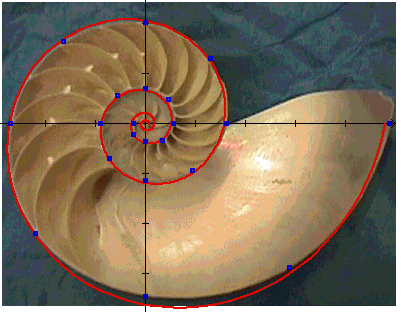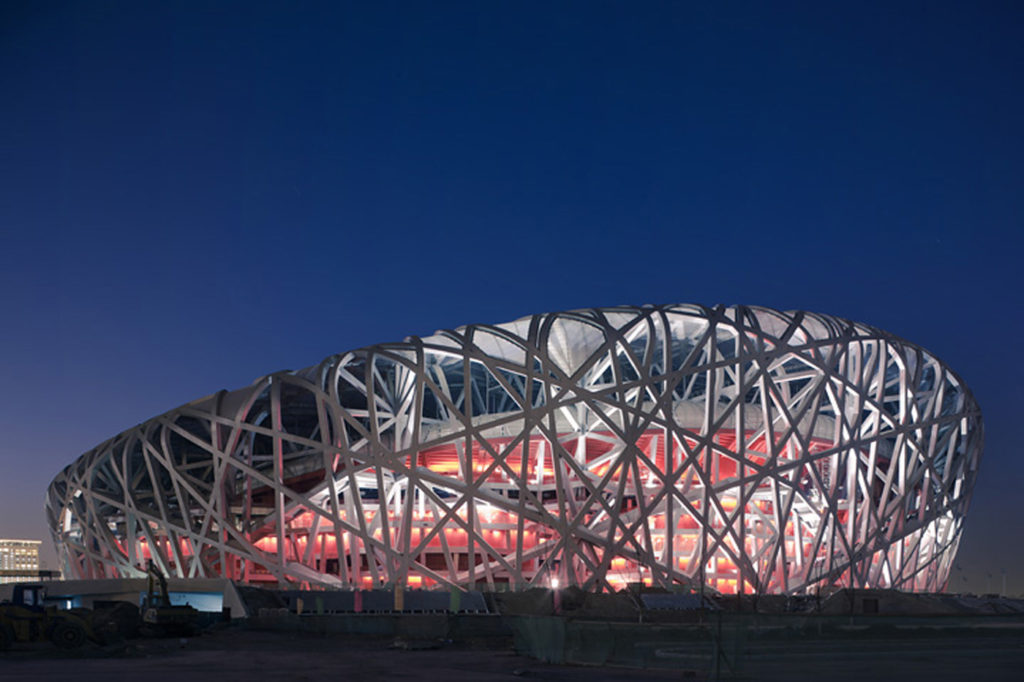Nature has been evolving structures for billions of years, constantly searching for better and better designs for the nearly infinite needs of living things. And it’s done and extremely good job. Biomimicry is the idea that we can imitate these designs created by evolution and use them for our own needs.
The aesthetic of biomimicry involves complex structures and intricate details with organic curves and flowing surfaces. Biomimetic structures tend to look more like they were grown than built, and have an organic and irregular feel. This can come from copying familiar structures like leaves, as seen in these light fixtures designed by Nervous System.

Or biomimicry can be more loosely interpreted, like this other light fixture designed by David Trubridge. It’s not based on any particular plant or animal, but it’s patterns and curves give it the aesthetic of a living thing.

Even widely recognized principles of design can be traced back to biological origins. The golden ratio, used in every type of design from architecture to logo design to fine art, was discovered by observing its appearance in nature. Nautilus shells follow the exponential spiral defined by the golden ratio, as do the spirals of seeds and branches of many types of plants.

We can also use biomimicry for practical designs like this 3d printed cast. The density of the mesh can be varied according to the part of a broken bone that needs the most stabilization, while the rest of the arm can have looser mesh in order to allow for more breathability.

By imitating living things in our products, designs and architecture, we can create things that are both incredibly beautiful and functional.
Photo 1: http://www.levinegabriella.com/exploringbiomimicry/ciid/2013/07/16/two-biomimetic-examples/
Photo 2: https://www.davidtrubridge.com/collection/lighting/navicula/
Photo 3: https://n-e-r-v-o-u-s.com/blog/?p=4099
Photo 4: https://sites.google.com/a/maret.org/advanced-math-7-final-project-2014/math-in-everyday-life/the-golden-ratio-in-the-word-around-us
Photo 5: https://forum.dynamobim.com/t/dynamo-generated-voronoi-3d-printed-arm-cast/18639


5 Comments. Leave new
I really enjoy this idea of how people have transformed biological origins to create art and as a basis of design. Things mentioned by you such as the golden ratio and the Nautilus shell are perfect examples of biomimicry. As mentioned in the comments, nature really has done a lot of optimization for us.
I have been to the building in the first picture. It was really fascinating. From your post, I systematically learn the style of this construction. Biomimicry is a prudent strategy to follow in the design procsess. It is the Nature that has already done the optimization in millions of years.
Great topic selection! Biomimicry not only produces some very complex and beautiful structures, but it also supplies a means of substantial innovation. Like you mentioned, nature has essentially mastered the art of design and why not look towards the master to teach ourselves a little more? The cast idea I though was amazing. It is the biggest issue that those wearing a cast face solved in a very easy, and cost effective manner. That is the other thing about nature. It’s solutions are the most efficient, effective, and clever. You should look into robots that are designed through biomimicry. I recently went to a seminar where they were designing their robots by observing cockroaches to make them more robust and resilient. Interesting stuff!
I’ve always found biomimicry to be a very interesting and a very important resource for inspiration in design. As you mentioned, living species on earth had millions of years to evolve and find the most suited structure or mechanism for their environment. One of the best examples we can take inspiration from is the human body, looking at microscopic bone structures for instance reveals to us that bones do not only rely on their tensile and compressive resistances only, but also have structures oriented in a ninety degree angle to those forces in order maximize their resistance to them. If inspiration from nature for design was more frequent than today I believe we would live in a world which is highly more efficient and less harmful to the environment.
I really like this topic. It’s fascinating that nature can sometimes give us the best solution or design for a problem. I would’ve liked to see more examples given that this aesthetic is so far reaching.